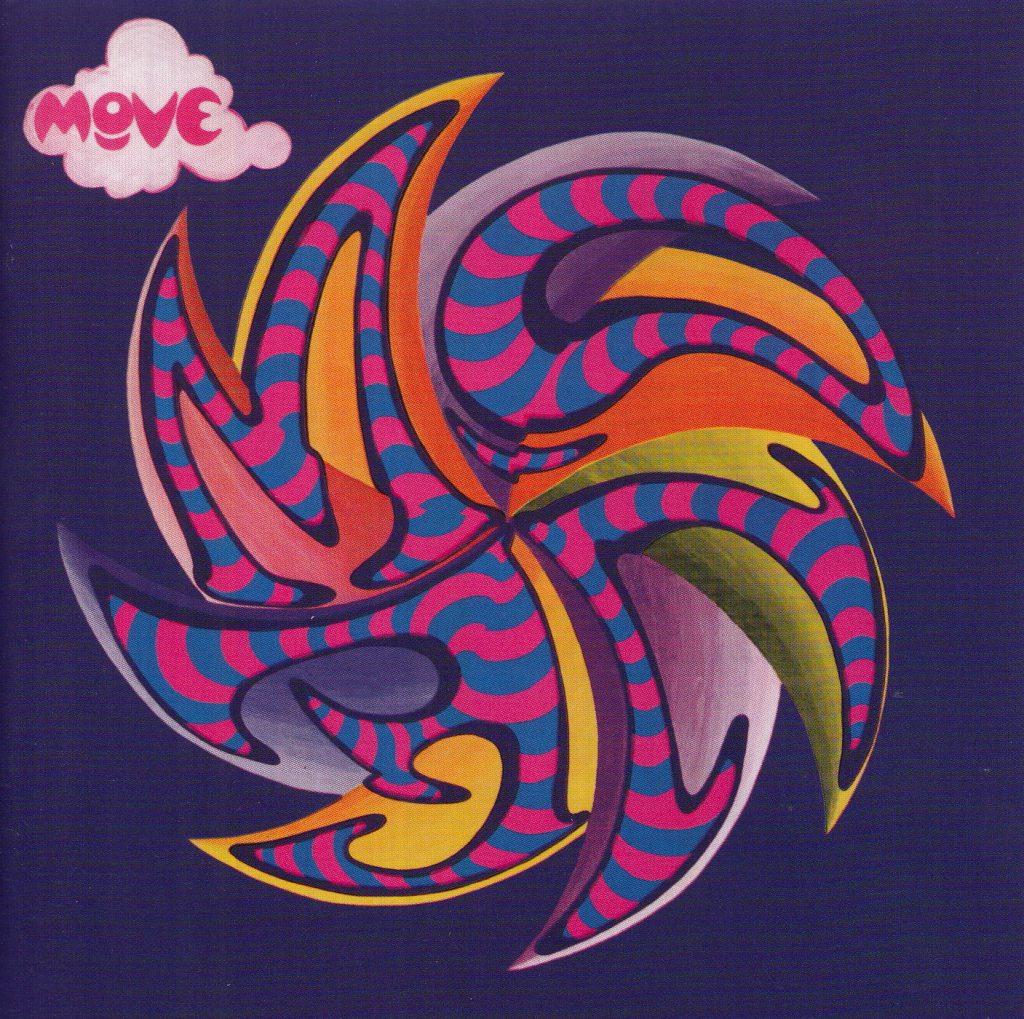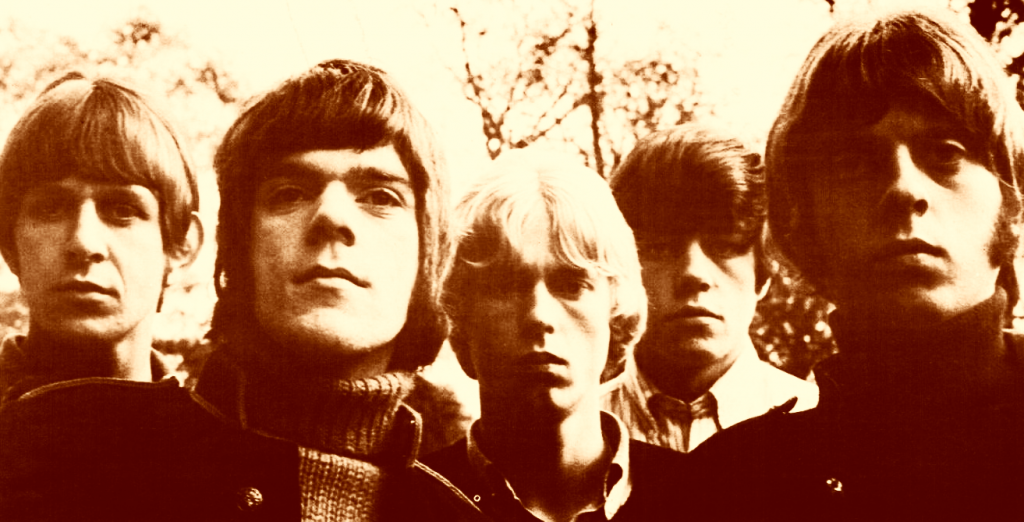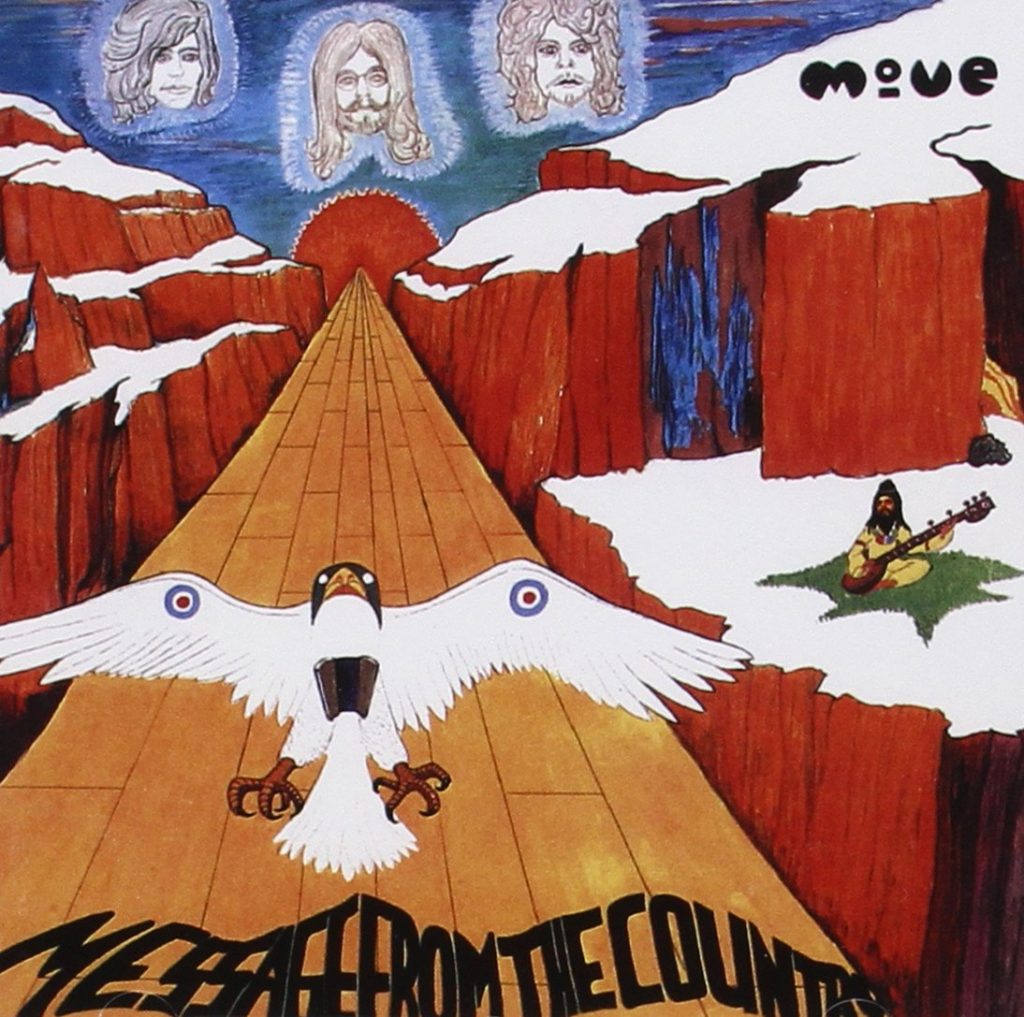Podcast: Play in new window | Download | Embed
How can a group survive by proudly staying local, being possibly too talented for their own good, not being pigeonholed and rising to the occasion when others drop the ball? Not for long, at least in the case of The Move. #themove #roywood #jefflynne #bevbevan #freakrock #UKrock #psychedelic #powerpop
This is a tale of what it truly means to be a talented musician, at least for the majority who do not achieve stardom.
Though known now as the band that Jeff Lynne of the Electric Light Orchestra (ELO) was in prior to his worldwide success, the story of The Move is a the stuff of every VH1 Storytellers episode ever created: People with loads of talent whose careers were sidelined by poor management and changing musical styles as they attempted to adapt to but were considered far ahead of their time regardless.

The Move, founded in 1965 by Roy Wood, Trevor Burton and Ace Kefford in Birmingham, England, attempted to be a supergroup made up of the best members of other bands from the local scene. They eventually ended up as a five piece, adding Carl Wayne and drummer Bev Bevan, and early in their career, four of the five members traded off on lead vocals.
After releasing several singles to much success, they started to run into problems. The bands manager, using any attempt to get the band noticed, made the biggest mistake of them all: doing something so controversial the group was successfully sued by British Prime Minister Harold Wilson for libel. Sadly, The Move dropped this manager, Tony Secunda, in favor of Don Arden, the notorious manager of many English artists, who not only stole from them, he pretty much ran their career into the ground. In a strange twist of fate, Arden was also dropped in favor of another manager who did even worse, with the band crawling back to Arden for help.

As if losing a major court battle and revolving bad management wasn’t enough, the band shrunk from a five piece to a quartet, then a trio, with Wood and Bevan sticking around for all line-ups. Wood, a truly eccentric pop genius, was growing tired of The Move, but needed to continue with this project in order to create a vision of a new band with new blood. Additionally, he knew a change was coming from psychedelic British Pop to something heavier, and the change in Wood’s stage persona and the band’s new sound alienated many fans.
“Yeah, it was all pretty wacky, that stuff.”
Jeff Lynn on his time in the move
Joining the band a as a session player was Richard Tandy, a multi-instrumentalist, and as a full-time member, a musician named Jeff Lynn, the latter being part of a group called The Idle Race that Wood admired. The feeling was mutual, as The Idle Race’s first single was also written by Wood.
The band, now reduced to a trio with Bevan, Wood, Lynne with some guest players, decided to change their sound dramatically, with enough 9 minute songs on a single LP to make even Emerson, Lake and Palmer blush. This caused some critics to soundly gripe at the band. This was preceded by an absolutely disastrous tour (only two shows in two cities) of the U.S. in 1969, the only dates they played in the colonies, opening for The Stooges.

Of course, the typical record company hassles also became the norm. They switched labels in their native U.K., and their records were difficult to find in the States, simply adding to the groups problems.
As The Move progressed, so did Roy Wood, a man whose many excellent musical ideas could not be confined to one sound or one group. The trio, while still active as The Move, formed ELO, which Wood also dropped out of after their first LP, which, as found out in later years, was caused by management problems again.
At heart, Wood, The Move’s primary composer, was a very British songwriter, particularly in the lyrics department. Where The Beatles seemed universal, Wood was akin to Monty Python: incredibly witty and sharp, but often too much for the mainstream listener to decipher in the U.S. in three minutes or less.

As a result, The Move are fondly remembered in their homeland, but rarely known anywhere else. Wood would go on to form Wizzard and score one of the most-loved Christmas singles in all of U.K. music history. Lynn and Bevan, with help from Tandy and others, would go onto superstardom in ELO. Along the way, The Move have been cited by countless bands, including KISS and Cheap Trick, as being one of their biggest influences, and helped the genre of Pop Pop become a commercial force.
This program comes by request of Chris Conner, who found a U.S. pressing of their final album at his job, and wanted to know more about The Move. Happy birthday next week my friend, and hope this show shines some light on one of the best “cult” bands ever and, in my honest opinion, one that deserves to be more than a footnote in music history.
First Part
- When Alice Comes Back to the Farm, 1970, Looking On
- Blackberry Way, 1968, single A-side
- Night of Fear, 1966, single A-side
- Omnibus, 1968, “Wild Tiger Woman” single B-side
- I Can Hear the Grass Grow, 1967, single A-side
- Do Ya, 1971, U.S. single A-side, U.K. single B-side to “California Man”
Second Part
- Fire Brigade, 1968, Move
- Ella James, 1971 Message From the Country
- The Words of Aaron, 1971, Message From the Country
- Flowers In the Rain, 1968, Move
- Hello Suzie, 1970, Shazam
- Vote For Me (alternate version), 1968, original version single B-side to “Cherry Blossom Clinic”
Finale
- Feel Too Good, 1970, Looking On
Love to you all.
Ben “Daddy Ben Bear” Brown Jr.
Host, Show Producer, Webmaster, Audio Engineer, Researcher, Video Promo Producer and Writer
“Copyright Disclaimer Under Section 107 of the Copyright Act 1976, allowance is made for ‘fair use’ for purposes such as criticism, comment, news reporting, teaching, scholarship, and research. Fair use is a use permitted by copyright statute that might otherwise be infringing. Non-profit, educational or personal use tips the balance in favor of fair use.”
